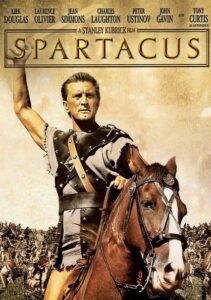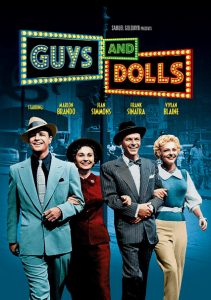Black Narcissus-1947
Director Michael Powell, Emeric Pressburger
Starring Deborah Kerr
Top 250 Films #209
Scott’s Review #688
Reviewed October 5, 2017
Grade: A
A British film made in 1947 that is way ahead of its time, Black Narcissus is a brilliant foray into the mysterious entity of nuns and the bitterness, both from humanity and from the elements, that a group of nuns must face as they attempt to establish a new school atop the hills of the Himalayas.
The film’s look is as fantastic as its story, with incredible cinematography and a foreboding, eerie quality.
Black Narcissus is one of the great treasures of classic cinema.
Based on the 1939 novel by Rumer Godden, Black Narcissus tells the story of revolving jealousy, rage, lust, and tension amid a convent of nuns living in isolation.
Deborah Kerr, fantastic in the lead role of Clodagh, Sister Superior and leader of the group, faces the temptations and anger of men while dealing with an unbalanced nun, Sister Ruth, played terrifically by Kathleen Byron.
The cinematography and the art direction must be praised as the lavish sets are just that- sets. However, the average viewer will be whisked away on a magical experience where it seems the sets are real locales, high atop the Himalayan mountains.
Scenes depict howling wind, mist, and fog in a believable manner. All sets are built and structured, and Black Narcissus was filmed entirely on a set. This tidbit is unbelievable, given the realism, especially since the film was made in 1947.
The lighting in the film is unique, precisely the vibrant colors of the pink flowers and, later, the close-ups of Sister Ruth. A fantastic example of this is her descent into madness during the final act, as her face, maniacal yet lovely, is heavily featured. Her face appears bright and hypnotic.
The main event, though, is the tales the film tells, which are pretty edgy for the year the film was made. Religion is always risky, and the treatment of the nuns as real human beings with actual emotions, even lustful ones, is brazen.
Specifically, Clodagh (Kerr) is a fascinating study as the character teeters on a romance with the charismatic, handsome, local British agent, Mr. Dean (David Farrar), while attempting to forget a failed romance during her youth in Ireland.
Meanwhile, Sister Ruth spirals out of control, leading to a dire climax involving an enormous church bell atop the restored structure.
A slight misstep the film makes is mainly casting white actors with heavy makeup in the Indian roles instead of actors with authentic ethnicity.
This detail is glaring because the makeup used is not overly convincing, and the casting of the gorgeous Jean Simmons as Kanchi, a lower-class dancing girl whom the Prince becomes infatuated with in a subplot, is incredibly guilty.
Still, this pales in comparison to the fantastic story and look of the film.
Black Narcissus is a classic film that contains a bit of everything—drama, thrills, intrigue, gorgeous sets, lavish design, and even a bit of forbidden passion—and brilliantly executes all aspects of the film.
A film admired by critics and directors throughout the ages and explicitly championed by Martin Scorsese, it has the unique quality of getting better with each viewing.
Oscar Nominations: 2 wins-Best Art Direction-Set Direction, Color (won), Best Cinematography, Color (won)


